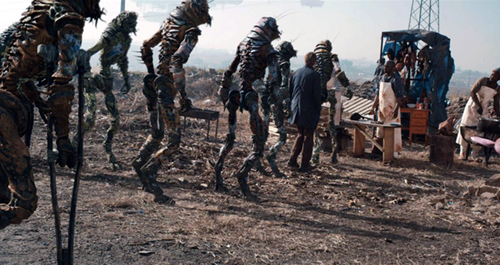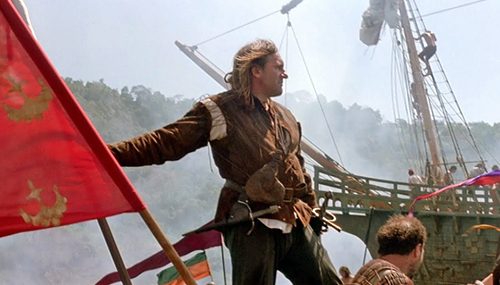Mike Johnson became the 59th Speaker of the House on October 25, 2023.
When questioned as to his world view, Mr. Johnson commented that all one needed to do to understand him was to read the Bible.
I hope he was referring to the New Testament, and not the Old.
The New Testament contains less contradictions on what constitutes good behavior.
It’s always interested me that the Bible says many contrary things, but people still use the Bible to prove their points, ignoring the conflicting material.
In the American South of the 1800’s, Protestant ministers (and Roman Catholic priests) used passages from the Old Testament to justify slavery.
They quoted Ephesians 6:1: “Slaves, obey your earthly masters.”
However, they ignored Exodus 21:16, about putting one to death who “stealeth a man and selleth him.”
(The Brandon Thomas play was originally performed in 1892.)
Although Jesus famously said that clothing is unimportant (and to look at the lilies of the field), there are sartorial proscriptions in the Old Testament.
These include: not wearing a “garment mingled of linen and woolen” (Leviticus 19:19 and Deuteronomy 22:11); not wearing the apparel of the other sex (Deuteronomy: 22:5) and not trimming hair in a round shape (Leviticus 19:27).
The Old Testament contains various dietary rules that have long been ignored by European and American Bible-readers.
According to Leviticus 11:3-7, people shouldn’t eat the meat of camels, hares, or swine.
Leviticus 11:10 says not to eat shellfish.
Yet, pork is a common protein, and mussels have been sold as a street food in cities (like London) since the 1600’s.
According to a 2023 Pew study, 32% of Americans have at least one tattoo, ignoring Leviticus 19:28 which bars printing any “marks upon you.”
Leviticus 18:22 says “thou shalt not lie with mankind as with womankind.”
However, Leviticus 18:19 also forbids sex during menstruation; “pulling out” and not completing the sex act (Genesis 38:9); and not immediately cleaning up semen stains (Leviticus 15:2-13).
Indeed, Leviticus proscribes many behaviors, but gives little information on which actions are worse: putting “a stumbling block before the blind” (Leviticus 19:14); going “up and down as a talebearer among the people” (Leviticus 19:16); or “seeking after wizards” (Leviticus 19:31 and 20:20).
The one issue that the Bible seems very firm on, in both the Old and New Testaments, is treating strangers well.
In Leviticus 19:33-34, the reader is told to not vex strangers, and “love them as thyself.”
In Matthew 25: 40, the Bible says “as ye have done it unto the least of my brethren, ye have done it to me.”
How does this square with declaring the U.S. is closed, and Governor Abbott setting up a 1,000-foot floating barrier in the Rio Grande River?
Elizabeth Cady Stanton (1815-1902) was a leader in the U.S. Women’s Rights movement.
She was both a devout Christian, and a rationalist.
During her long life, she corresponded with various Protestant ministers: among them, Reverend Theodore Parker (an American minister, who believed that the Bible needn’t be taken literally) and Bishop John William Colenso (a Cornish cleric who preached that the customs of one society shouldn’t be imposed on all societies).
Eventually, she put together a committee and published The Women’s Bible,* when she was 80 years old.
One fact that E.C.S. points out in this work is that the punishments against women in the Bible are frequently much worse than the punishments against men.
(For example, a woman may be scourged, but a man just pays a fine, for the same sin.)
As E.C.S. comments on Numbers 12: “As women are supposed to have no character or sacred office, it is always safe to punish them to the full extent of the law.”
The Women’s Bible focuses on the many contradictions in the Bible.
A table on page 18 points out the two contrary descriptions of the creation in Genesis (the Elohistic and the Iahoistic), asking how both can be literally true.
Was land created after water, or before?
Were man and woman created at the same time, or was woman created after vegetation and animals? Which order was it?

German poster of 1949’s Samson and Delilah, which featured Victor Mature and Hedy Lamarr in the title roles.
Clara B. Neyman commented on Judges (in The Woman’s Bible), that: “The absence of moral traits is very evident in Samson, and this is the reason why he fell easy prey to the wiles of designing women.
One of the great charms of The Woman’s Bible is its’ sarcastic humor.
(Although there were more than 30 co-authors, two-thirds of book is by E.C.S.)
Commenting of the story of Noah’s Ark in Genesis, E.C.S. says “the ark made by unseen hands, like a piece of Indian rubber, was capable of expanding indefinitely.”
Of course, there was an immediate outcry against The Women’s Bible, and this outcry effectively ended E.C.S.’s leadership in the Suffrage movement.
However, E.C.S. believed until the end of her days that although the Bible contained many redeeming passages, it was essentially made up of “‘religious superstitions’ which. . . perpetuated women’s bondage.”
As a mother of the Women’s Rights movement, she felt she needed to fight against a literal reading of the Old Testament for the ultimate good of “her girls,” that is, women.
*The Original Feminist Attack on the Bible (The Women’s Bible), by Elizabeth Cady Stanton, with an introduction by Barbara Welter, 1974, Arno Press.
































